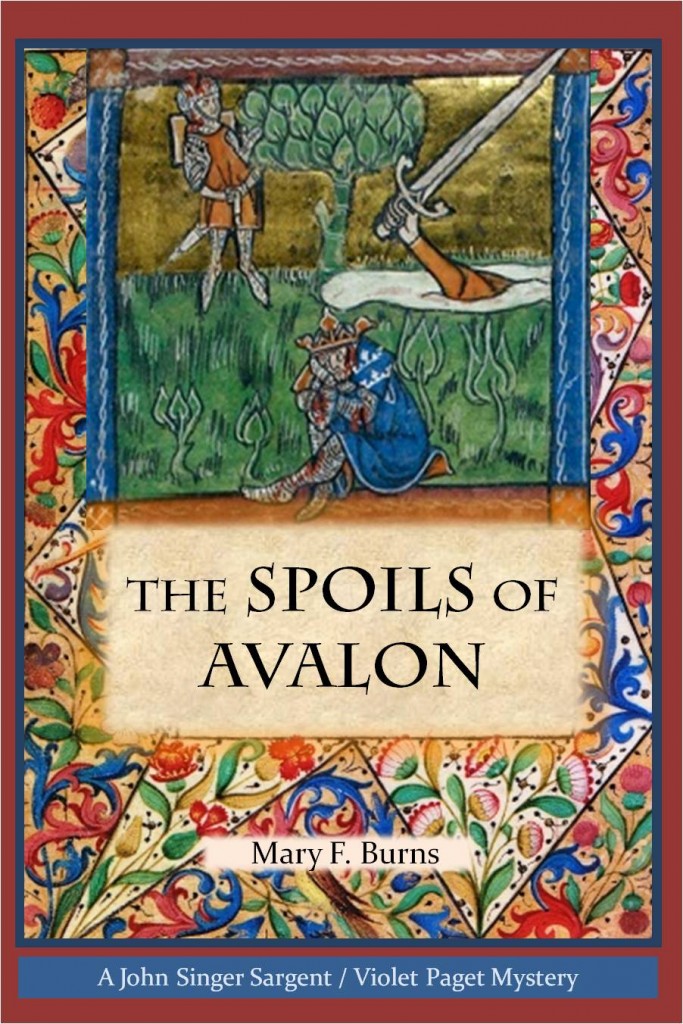 This month I’d like to welcome the gifted Mary F. Burns and her latest release, a historical mystery The Spoils of Avalon. Burns is one my favorite authors writing today. Her storytelling is vivid, characters distinct, all accomplished through polished and witty prose. To my blessed surprise and honor, Burns asked if I’d write an endorsement for this novel, of which I’ve shared below, with the intention of imparting the essence of this unique two time period mystery.That revealed, here’s what I have to say about The Spoils of Avalon:
This month I’d like to welcome the gifted Mary F. Burns and her latest release, a historical mystery The Spoils of Avalon. Burns is one my favorite authors writing today. Her storytelling is vivid, characters distinct, all accomplished through polished and witty prose. To my blessed surprise and honor, Burns asked if I’d write an endorsement for this novel, of which I’ve shared below, with the intention of imparting the essence of this unique two time period mystery.That revealed, here’s what I have to say about The Spoils of Avalon:
“An artist, a writer, a murder, a mysterious tome, a dissolving time, a crime, Arthurian legends, ancient saints books and bones. Burns’ prose drives and is sublime, with characters and settings that live on in your mind. This is an original historical mystery connecting the Age of Industry with the Age of Miracles.”
The chapters alternate between late eighteenth-century England’s Age of Industry, opening with a reunion of American portrait painter John Singer Sargent and his lifelong British writer friend Violent Page, both of whom are called upon to unravel a disturbing murder. Then we are transported back to the sixteenth century, the Age of Miracles, during King Henry the VIII’s reign and at the crucial moment when he was disbanding The Church island-wide. Burns takes us into the secluded stone chambers and the souls of the clergy in one of the last great standing monastery’s heart-wrenching saga of dissolution. Magically Burns weaves these seemingly disparate time periods and stories in the most astonishing way! Truly her storytelling is masterful and imaginative, keeping you quickly turning the page!
Now let the mysteries behind the making of this amazing tale unfold…
Stephanie Renee dos Santos: How did you conceive of this amazing dual time period novel concept for The Spoils of Avalon? And will you tell us a bit about each period.
Mary F. Burns: I had been wanting to write a novel about the Dissolution of the Monasteries, and Glastonbury in particular, for a really long time, so that was on my mind. (In fact, I have a 40-page start on a “druid”-themed novel that starts in pre-historic Glastonbury and skips through time after that, but who knows whether it will see the light of day?) The other time period—later 1800’s—is tied to the lives of John Singer Sargent and Violet Paget. After I wrote my previous novel, which is about Sargent with Paget as a major character, I simply couldn’t let go of their voices! They were such lively characters to me, I wanted to spend more time with them, so I took the plunge and turned them into amateur sleuths. And as I started writing, my yearning to write about Glastonbury just rose up and declared itself in one of those delightful incidents of serendipity that happens when one writes! Because I was conceiving of this as the first of a series, the dual-time period structure is going to be a constant element in all the books to come.
SRDS: What compelled you to include art and artist in your historical novel?
MFB: I am both a writer and an artist myself (humbly said), so writing about two characters who also have those talents provides me with glorious opportunities to explore and present the beauty, truth and even the dark side (!) of art and writing. As amateur detectives, each character brings different strengths to solving the mystery: Paget the writer is obsessive, detailed, curious, intent on finding answers to the big questions of life and human actions, while Sargent the artist is more intuitive, taking in color, form and shading to allow him to understand and reproduce more than what is simply ‘there’ in reality.
SRDS: What drew you to your specific visual art medium, artwork, and/or artist?
MFB: I have always loved art, particularly painting, and have spent a good deal of my life in museums and poring over art books. I fell seriously in love with Sargent in 1999, when I attended an exhibition of his work at the National Gallery in Washington, D.C., which is the trip that inspired my first novel about him. As a writer, I can’t help but think about the story behind the painting, and Sargent’s, more than any other paintings I have seen, have an incredible depth of humanity, psychology and emotion that just beg to be turned into a story. I’m so looking forward to writing this series of mysteries and be able to include many of Sargent’s astounding portraits in the very year that he was painting them, and making them (or the sitter) part of the mystery. The Daughters of Edward Darley Boit is one such painting that I felt I just had to write about, to discover the story behind the painting.
SRDS: What unique historical objects and/or documents inspired the story?
MFB: I was reading a book about Glastonbury Abbey, which was the last of the great abbeys to fall to Henry VIII in the Dissolution. The author of the book (non-fiction) speculated that the Abbot had sufficient warning to try to hide away some of the most precious relics, manuscripts and holy objects, to keep them out of the King’s hands—and that some day, a veritable treasure trove of “Glastonbury items” would tumble out of a forgotten priest-hole or hidden room in some Northern England castle (where the nobles stayed Catholic longer than those in the South). That sentence caught my imagination and never let go. So, with a nod to Henry James (my favorite author) and his “Spoils of Poynton”, I began formulating the story behind The Spoils of Avalon.
SRDS: Is there an art history message you’ve tried to highlight within the novel?
MFB: I wouldn’t exactly call it a message, but I am eager to acquaint readers with many of the artistic (and literary) trends and movements of the time—the pre-Raphaelites (who were wild about all the Arthurian legends), for instance, and the Impressionists, who were gaining strength in Paris—and how these new styles of art were hotly debated, decried as well as lauded throughout Europe. Because I will be writing chronologically in the series, having started in 1877 when Sargent and Paget were both just turning twenty-one, I foresee a great adventure in being able to comment on the succeeding changes in the art world, from Expressionism to Fauvism to Cubism and more!
SRDS: What do you think readers can gain by reading stories with art tie-ins?
MFB: I hope such reading will impel readers to look at the art that is mentioned and described, either online or in museums, and even to support with their donations the many art galleries and museums that provide such an incredible experience to the public.
SRDS: What fascinating information did you uncover while researching but were unable to incorporate into the book, but can share here?
MFB: I really wanted to include a kind of “flashback” within the Glastonbury chapters on the discovery of the burial site of King Arthur and Queen Guenevere, which the monks apparently found in 1191 in one of the Abbey’s graveyards. Buried sixteen feet down, was a giant oak tree trunk, within which were the clothed skeletons of a very large and tall man, and a woman with blond hair. A bronze plaque embedded in the oak tree indicated that they were Arthur and “his second wife” Guenevere (now there’s another story!). A monk touched her hair and it fell into dust. Years later, the remains were removed to a huge black marble tomb in front of the high altar in the church, where they stayed until the Dissolution in 1539, when it “disappeared.
SRDS: Any further thoughts on art in fiction you’d like to expand on?
MFB: I think writing about art helps bring new insights and depth to a viewer of the art, whether it’s a painting or a sculpture or an illuminated manuscript. I find that trying to get inside the mind of the artist, by reading his or her biographies, letters, etc., is a fascinating and deeply gratifying experience, and if I can get that across to my readers, all the better!
SRDS: Are you working on a new historical novel with an art tie-in? If so, will you share a little with us about your next release?
MFB: The second book in the mystery series may be set in Venice or else in Paris, where both Paget and Sargent spent a great deal of time. It will probably be either 1878 or 1879, just a year or so on from the first book, while Paget (as Vernon Lee, her nom du plume) is finishing up a manuscript for her first major publication, Studies of the Eighteenth Century in Italy, and Sargent is beginning to make his mark at the famous Salon, with his portrait of his maître, Carolus Duran, which is considered to be his “coming out” debut portrait. It won an Honorable Mention at the Salon, and as his third painting to be exhibited there, qualified him to enter paintings in the future without having to be passed by the Salon jury.
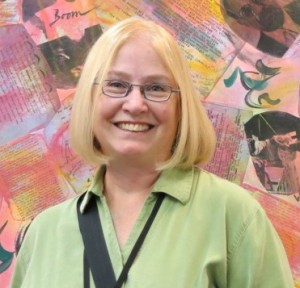 About the author: Mary F. Burns is the author of Portraits of An Artist (Sand Hill Review Press, February 2013), a member of and book reviewer for the Historical Novel Society and a former member of the HNS Conference board of directors. A novella-length book, the first in a Genesis trilogy, Isaac and Ishmael, is also being published by Sand Hill Review Press in 2014. Ms. Burns’ debut historical novel J-The Woman Who Wrote the Bible was published in July 2010 by O-Books (John Hunt Publishers, UK). She has also written two cozy-village mysteries in a series titled The West Portal Mysteries (The Lucky Dog Lottery and The Tarot Card Murders).
About the author: Mary F. Burns is the author of Portraits of An Artist (Sand Hill Review Press, February 2013), a member of and book reviewer for the Historical Novel Society and a former member of the HNS Conference board of directors. A novella-length book, the first in a Genesis trilogy, Isaac and Ishmael, is also being published by Sand Hill Review Press in 2014. Ms. Burns’ debut historical novel J-The Woman Who Wrote the Bible was published in July 2010 by O-Books (John Hunt Publishers, UK). She has also written two cozy-village mysteries in a series titled The West Portal Mysteries (The Lucky Dog Lottery and The Tarot Card Murders).
Ms. Burns was born in Chicago, Illinois and attended Northern Illinois University in DeKalb, where she earned both Bachelors and Masters degrees in English, along with a high school teaching certificate. She relocated to San Francisco in 1976 where she now lives with her husband Stuart in the West Portal neighborhood. Ms. Burns has a law degree from Golden Gate University, has been president of her neighborhood association and is active in citywide issues. During most of her working career she was employed as a director of employee communications, public relations and issues management at various San Francisco Bay Area corporations, was an editor and manager of the Books on Tape department for Ignatius Press, and has managed her own communications/PR consulting business, producing written communications, websites and video productions for numerous corporate and non-profit clients.
From more about Mary:
email: maryfburns@att.net , website, Facebook, Twitter, and Goodreads, or read her blog posts at:
www.jthewomanwhowrotethebible.com
www.literarygracenotes.blogspot.com
www.portraitsofanartist.blogspot.com
www.sargent-pagetmysteries.blogspot.com
www.genesisnovel.blogspot.com
To purchase: The Spoils of Avalon
Join us here Saturday December 27th for an interview with Kelly Jones, author of The Woman Who Heard Color. (What a great title!)
Interview posting schedule:
2014: August 30th Susan Vreeland, Lisette’s List (new release), September 27th Anne Girard, Madame Picasso (new release),October 25th Yves Fey, Floats the Dark Shadow, November 29th Mary F. Burns, The Spoils of Avalon (new release), December 27th Kelly Jones, The Woman Who Heard Color
2015: January 31st Heather Webb, Rodin’s Lover (new release), February 28th Alyson Richmond, The Mask Carver’s Son, March 28th Maureen Gibbon, Paris Red (new release), April 25th Lisa Brukitt, The Memory of Scent May 30th, Lisa Barr, Fugitive Colors, June 27th Lynn Cullen, The Creation of Eve, July 25th Andromeda Romano-Lax, The Detour, August 29th Frederick Andresen,The Lady with an Ostrich Feather Fan

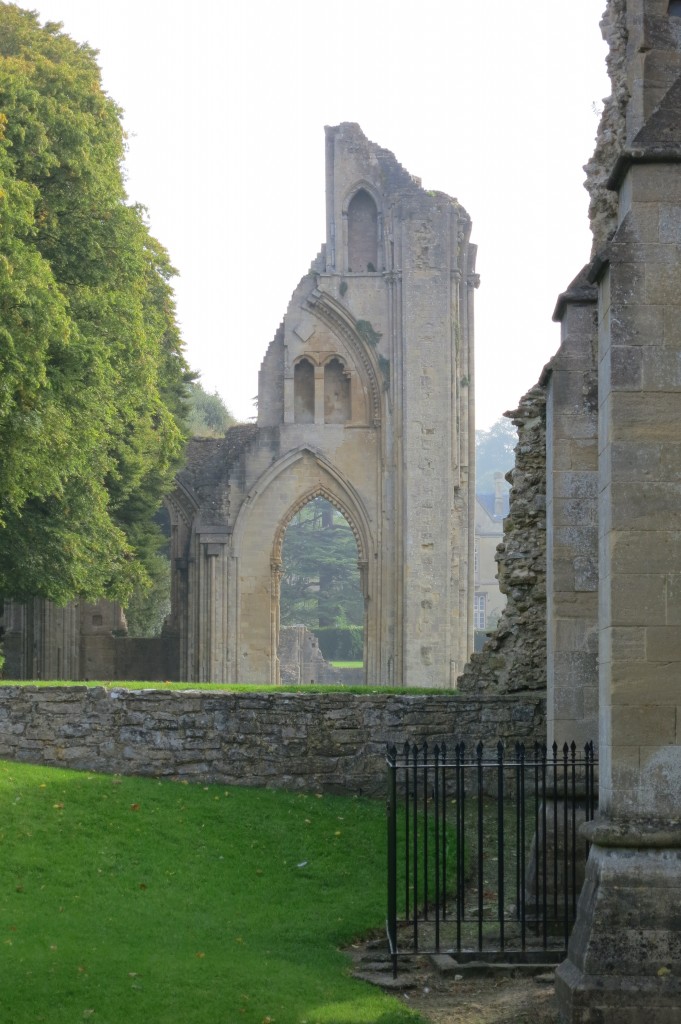
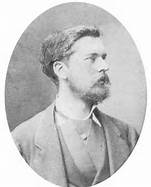
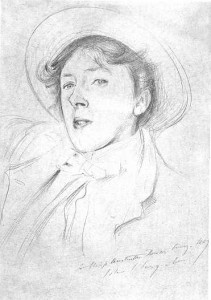
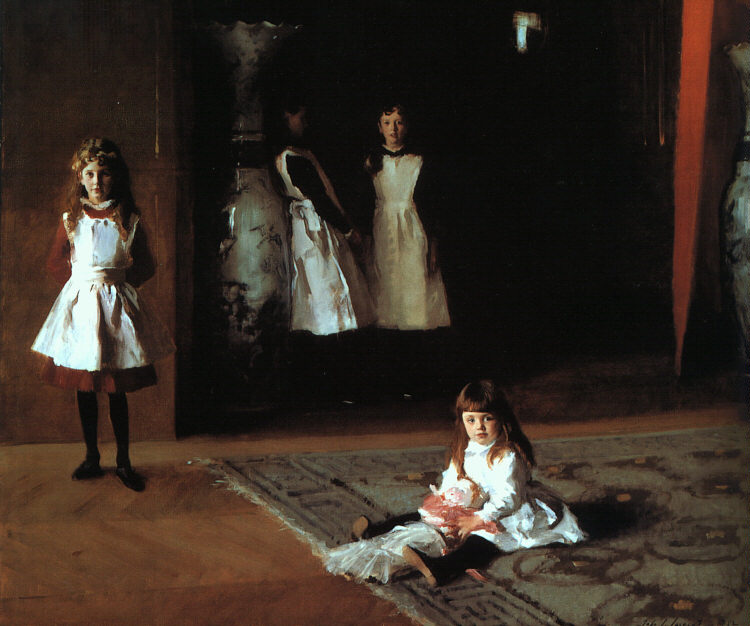
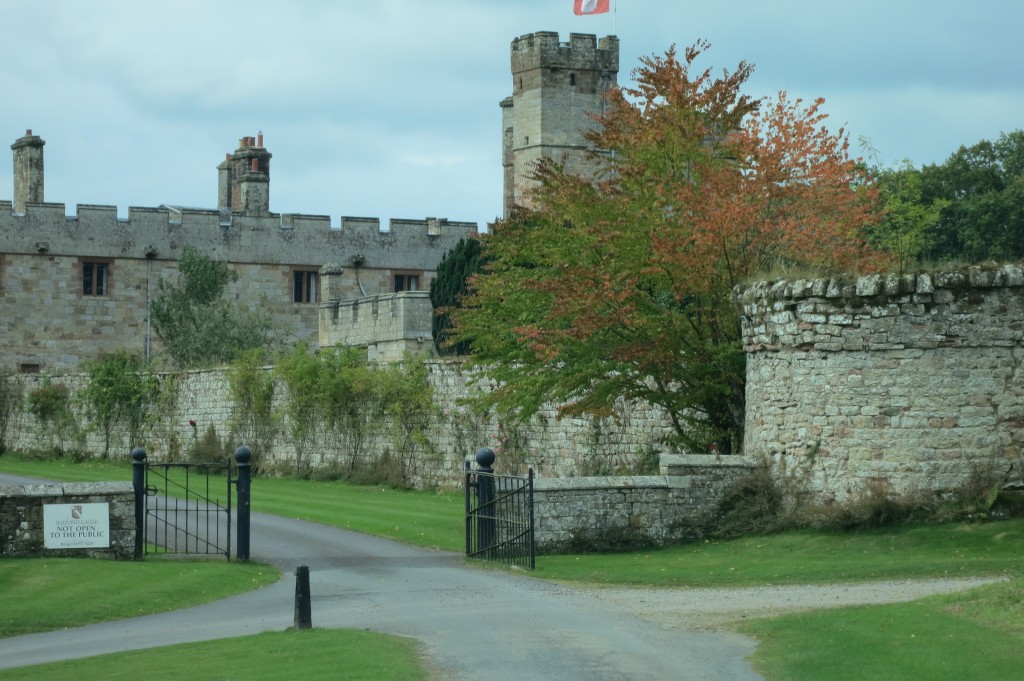
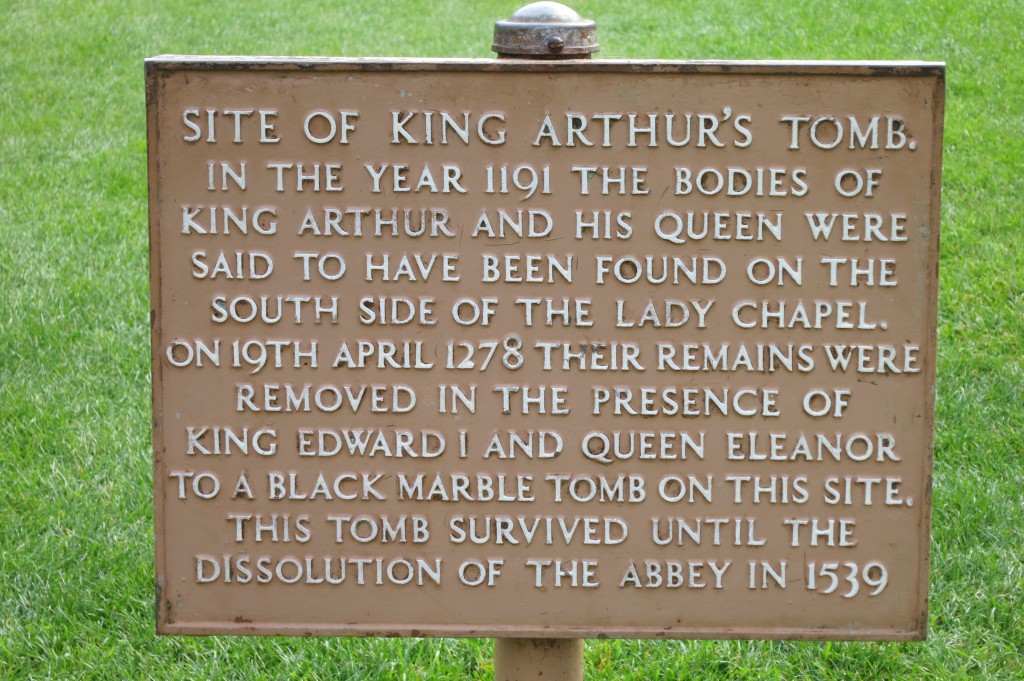
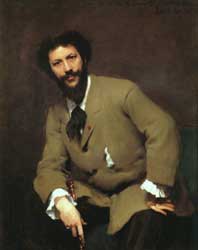
Certainly a writer I shall read. Look back though. It was Henry VIII not VII. Excellent interview.
Hi Carol- Thanks for stopping by and reading this post, and for the heads-up on the typo! I just fixed it. Thanks!